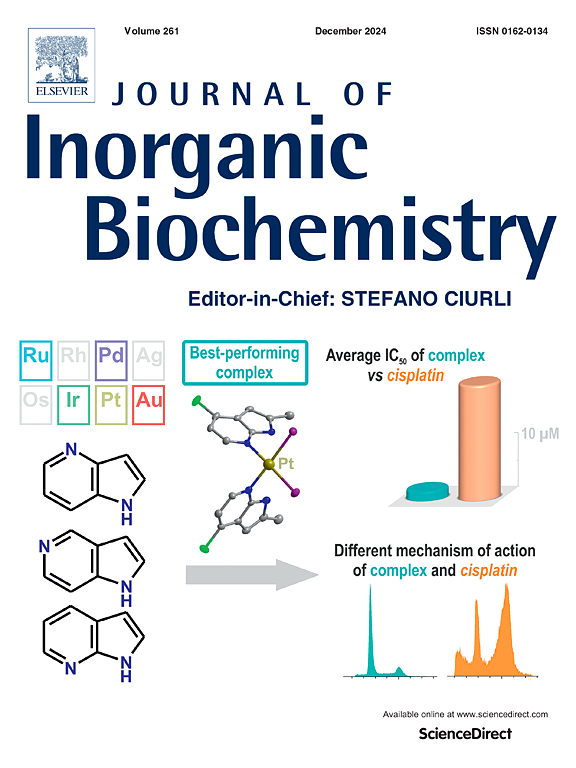Unraveling the unfolding mechanism of pseudoazurin: Insights into stabilizing cupredoxin fold as a common domain of Cu-containing proteins
IF 3.2
2区 化学
Q2 BIOCHEMISTRY & MOLECULAR BIOLOGY
引用次数: 0
Abstract
Understanding protein unfolding mechanisms is crucial for comprehending protein-folding related diseases, developing diagnostic methods, and designing proteins with desired stability for medicinal or industrial applications. However, investigating structures at atomic resolution is often difficult due to the flexibility and transiency of unfolding intermediate states. Pseudoazurin (PAz) is a well-characterized simple cupredoxin composed of a small polypeptide (124 amino acids) and a single metal cofactor (Cu2+), making it suitable to study the unfolding mechanism. In this study, combining the merits of structure determination by small-angle neutron scattering (SANS) and molecular dynamics (MD) simulations enabled us to access the details of the unfolding mechanism. The unfolding of PAz proceeds through a two-step mechanism involving the “native”, “open-domain”, and “random-coil” states. Several amino acid residues at the vicinity of Cu2+ ion are involved in the structural transitions, where the interactions among these residues are important in controlling the stability of PAz. These findings may be applicable to stabilizing metalloproteins with cupredoxin domain structures.

揭示伪azurin的展开机制:铜氧还蛋白折叠作为含铜蛋白的共同结构域的稳定见解
了解蛋白质展开机制对于理解蛋白质折叠相关疾病、开发诊断方法以及设计具有所需稳定性的蛋白质用于医疗或工业应用至关重要。然而,由于展开中间态的灵活性和瞬变性,在原子分辨率上研究结构往往是困难的。Pseudoazurin (PAz)是一种由一个小多肽(124个氨基酸)和一个金属辅助因子(Cu2+)组成的具有良好表征的简单铜氧还蛋白,适合研究其展开机理。在本研究中,结合小角中子散射(SANS)和分子动力学(MD)模拟确定结构的优点,使我们能够获得展开机制的细节。PAz的展开通过涉及“原生”、“开放域”和“随机线圈”状态的两步机制进行。Cu2+离子附近的几个氨基酸残基参与了结构转变,其中这些残基之间的相互作用对控制PAz的稳定性很重要。这些发现可能适用于稳定铜氧还蛋白结构域结构的金属蛋白。
本文章由计算机程序翻译,如有差异,请以英文原文为准。
求助全文
约1分钟内获得全文
求助全文
来源期刊

Journal of Inorganic Biochemistry
生物-生化与分子生物学
CiteScore
7.00
自引率
10.30%
发文量
336
审稿时长
41 days
期刊介绍:
The Journal of Inorganic Biochemistry is an established international forum for research in all aspects of Biological Inorganic Chemistry. Original papers of a high scientific level are published in the form of Articles (full length papers), Short Communications, Focused Reviews and Bioinorganic Methods. Topics include: the chemistry, structure and function of metalloenzymes; the interaction of inorganic ions and molecules with proteins and nucleic acids; the synthesis and properties of coordination complexes of biological interest including both structural and functional model systems; the function of metal- containing systems in the regulation of gene expression; the role of metals in medicine; the application of spectroscopic methods to determine the structure of metallobiomolecules; the preparation and characterization of metal-based biomaterials; and related systems. The emphasis of the Journal is on the structure and mechanism of action of metallobiomolecules.
 求助内容:
求助内容: 应助结果提醒方式:
应助结果提醒方式:


